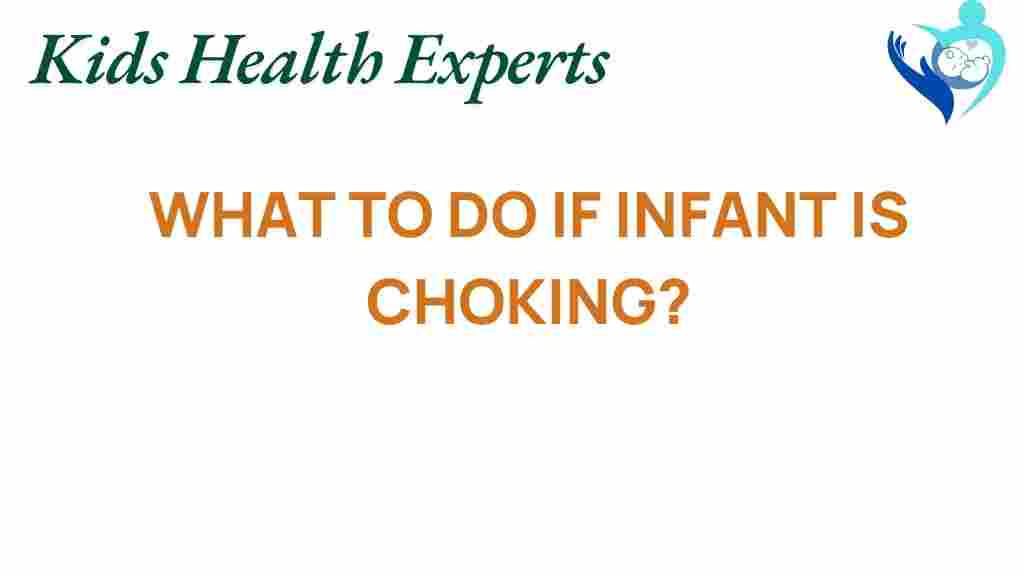Choking in Infants: Essential Steps Every Parent Should Know
As a parent, safeguarding your infant’s health and well-being is a top priority. One of the most alarming situations you may face is infant choking. Understanding the risks, knowing how to respond, and implementing safety measures can make a significant difference in these critical moments. In this article, we will delve into the essential steps every parent should know concerning infant choking, covering emergency response, first aid, and effective parenting tips for preventing choking hazards.
Understanding Infant Choking
Infant choking occurs when a foreign object obstructs the airway, preventing the infant from breathing properly. This can happen with food, toys, or any small items within reach. The risk is particularly high for infants aged 0-4 years, as they explore the world by putting things in their mouths. Recognizing the signs of choking and knowing how to respond swiftly can save your child’s life.
Signs of Choking in Infants
Being able to identify the signs of choking is crucial. Here are the main indicators:
- Inability to cry or cough: A choking infant may struggle to make sounds.
- Gasping or wheezing: They may make high-pitched noises as they try to breathe.
- Turning blue: The lips or face may start to turn blue due to lack of oxygen.
- Clutching the throat: Older infants might instinctively try to remove the obstruction.
Emergency Response Steps for Infant Choking
If you suspect your infant is choking, follow these emergency response steps:
Step 1: Assess the Situation
Quickly determine if your infant is truly choking. If they are still able to cough or cry, encourage them to continue coughing to expel the object.
Step 2: Call for Help
If the infant cannot breathe, call emergency services immediately. While waiting for help, quickly assess the situation and prepare for first aid.
Step 3: Position the Infant
Lay the infant face down along your forearm, supporting their head and neck. Ensure their head is lower than their chest to help gravity dislodge the object.
Step 4: Deliver Back Blows
With the infant positioned, deliver five firm back blows between the shoulder blades using the heel of your hand. Perform these blows with enough force to create a vibration in the body.
Step 5: Perform Chest Thrusts
If the object does not dislodge, turn the infant over while still supporting their head and neck. Place two fingers in the center of the chest, just below the nipple line, and perform five chest thrusts. Compress the chest about 1.5 inches deep, allowing it to return to its original position between thrusts.
Step 6: Repeat as Necessary
Continue alternating between five back blows and five chest thrusts until the object is expelled or emergency help arrives.
First Aid for Infant Choking
Knowing first aid for infant choking is essential for all parents. Consider taking a certified first aid and CPR class to become proficient in these life-saving techniques. Here are a few key points to remember:
- Stay Calm: Your calm demeanor can help reassure the infant.
- Don’t Stick Your Fingers In: Avoid blindly reaching into the infant’s mouth to remove an object, as this may push it further down.
- Know When to Stop: If the infant loses consciousness, prepare to perform CPR.
Prevention: Safety Measures and Parenting Tips
Preventing infant choking is vital for every parent. Here are some effective safety measures and parenting tips to reduce choking hazards:
- Supervise Playtime: Always supervise your infant during play, especially with small toys.
- Choose Age-Appropriate Toys: Ensure toys are suitable for your infant’s age and do not contain small parts.
- Cut Food Properly: Always cut food into small, manageable pieces, and avoid serving hard or round foods.
- Avoid Distractions During Meals: Limit distractions at mealtimes to help your infant focus on chewing and swallowing.
- Teach Safe Eating Habits: As they grow, teach your child to chew their food thoroughly and not to talk while eating.
Common Choking Hazards to Watch For
Understanding common choking hazards can help you create a safer environment for your infant. Here are some frequent culprits:
- Small toys and play pieces
- Coins and buttons
- Hard candies and gum
- Fruits like grapes and cherry tomatoes
- Hot dogs, whole nuts, and popcorn
For more information on choking hazards and safety tips, you can visit The American Academy of Pediatrics.
Troubleshooting Tips for Parents
In the unfortunate event that choking does occur, here are troubleshooting tips to keep in mind:
- Stay Informed: Regularly update your knowledge of infant first aid techniques.
- Practice Makes Perfect: Consider practicing the steps of first aid for choking with a partner.
- Know Your Emergency Contacts: Keep emergency numbers easily accessible, including your pediatrician and local emergency services.
Conclusion
Choking in infants is a frightening experience, but being prepared can make all the difference. Understanding the signs of choking, responding swiftly with proper first aid, and implementing safety measures can help protect your child. Remember, prevention is key—stay vigilant against choking hazards and always prioritize your infant’s safety.
For further knowledge on infant care and health advice, don’t hesitate to check additional resources or consult with healthcare professionals. Your proactive approach can help ensure the well-being of your infant and provide you with peace of mind.
For more parenting tips and safety measures, visit our Parenting Guide.
This article is in the category Care and created by KidsHealthExperts Team
